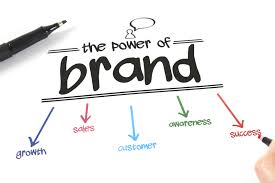Learn YouTube Mastery Course For Your Brand (FOR FREE)
Learn YouTube Mastery Course For Your Brand (FOR FREE)
Y.M.C COURSE (Part I)
Created by Arrowmug
Last updated January 25, 2021
|
S/N |
Lesson Content |
|
01 |
Get
the right YouTube URL |
|
02 |
Build an attractive YouTube profile
and description |
|
03 |
Brand
your YouTube channel art (background) and add a high-resolution avatar image |
|
04 |
Associate your website to your
YouTube channel |
Choose a YouTube username that reflects your brand for your channel URL – preferably not too long or complicated, and one that represents the name of your company or product. You will then be able to send people to this memorable address, e.g. ”http://www.youtube.com/user/yourcompanyname.” Your username will default as your channel title, but you may want to change this for SEO purposes, or – as YouTube will ask for all new accounts – reflect the name associated with a Google+ profile or business page.
Note: If you have an existing YouTube channel that you want to link to Google+, go to your account settings on YouTube and click “Link channel with Google+” below your email address.
Get a custom channel URL
If you satisfy the criteria below,
you can give fans an easy-to-remember web address, called a custom channel URL:
·
Have
100 or more subscribers
·
Be
at least 30 days old
·
Have
an uploaded photo as a channel icon
·
Have
uploaded channel art
This will look like youtube.com/yourcustomname or youtube.com/c/yourcustomname.
You can choose a custom URL based on
your display name, your YouTube username, any current vanity URLs that you
have, or the name of your linked website (all subject to availability).
Read:
https://support.google.com/youtube/answer/2657968?hl=en for instructions on how
to set up your custom channel URL.
2. Build an attractive YouTube profile and description
Don’t ignore your YouTube account’s “About” section. Use it to sell your channel and its benefits to potential subscribers, and include all relevant social media and web links. Fill out a keyword-rich description that will tell people all about your channel, what they will gain from it, why they should subscribe, what your upload schedule is, etc. This text will be picked up by search engines and help your channel to rank higher in search results. The first 45 or so characters of your description will be visible when your YouTube channel appears in the “Channels” sub-section of the site’s search results, so pack it with keyword-rich information.
Fill out your Channel Keywords
3. Brand your YouTube channel art (background) and add a high-resolution avatar image
Upload a square, high-resolution
(1600 × 1600 pixel) profile photo that is recognizable at smaller resolutions.
This avatar will be your channel’s billboard all over YouTube, including in
search results and comments. If you have chosen to link your Google+ account
and YouTube channel, your Google+ profile or company page profile photo will
have automatically become your YouTube avatar. If you want to change your
profile image on YouTube, you will need to edit it via Google+, but be patient
as the update might take a while to appear.
Optimize your YouTube channel art for all devices
In June 2013, YouTube rolled out a
new channel layout called the One Channel design. This new look enables
consistent branding across all devices (desktops, mobiles, televisions, etc.),
allows you to reach out to non-subscribed viewers via a channel ‘trailer’ and
shows off more of your content to existing subscribers to keep them watching
for longer.
The One Channel layout’s main branding opportunity consists of just one main banner that features your channel’s profile photo to the left, and links to the channel’s website and social media profiles on the right. YouTube recommends uploading an image that is 2560 × 1140 pixels in size. Inside this massive space are sections that cater to different screen sizes. For instance, the whole image will be seen on large televisions, while a central section of 1546 × 425 pixels is the ‘safe’ area where your logo will be visible on all devices. Whatever your design, do your best to feature your brand’s personality in the channel art. Make the audience feel like they are connecting with a person or character when they arrive at your channel; this is a tactic that will encourage them to stick around.
4. Associate your website to your YouTube channel
Visit
your Channel Settings’ “Advanced” menu again and you’ll see an option to
associate your channel with a website. Doing so will help YouTube to improve
the quality of its search results and verify your channel as the official
representation of your brand on the site. Enter your website URL and verify
that you own it via the options listed, including an HTML tag or through Google
Analytics.
Visit
your Channel Settings’ “Advanced” menu again and you’ll see an option to
associate your channel with a website. Doing so will help YouTube to improve
the quality of its search results and verify your channel as the official
representation of your brand on the site. Enter your website URL and verify
that you own it via the options listed, including an HTML tag or through Google
Analytics.
Watch out for the Part 2 of this course... And don't forget to share with someone somewhere as this may be the help they need to launch their business unto the next level.






Comments
Post a Comment